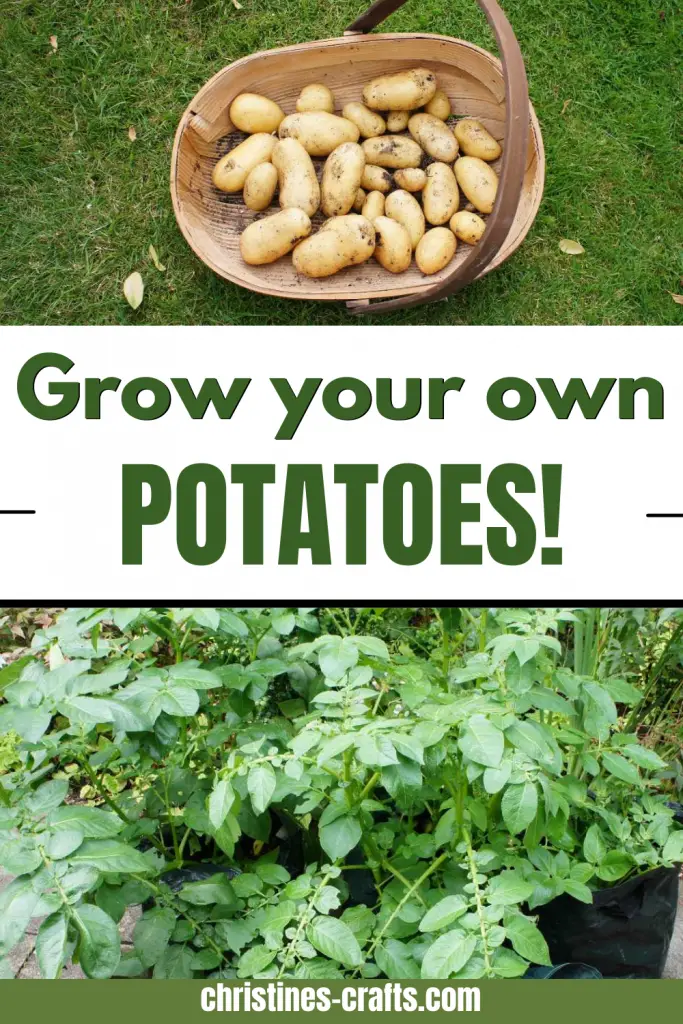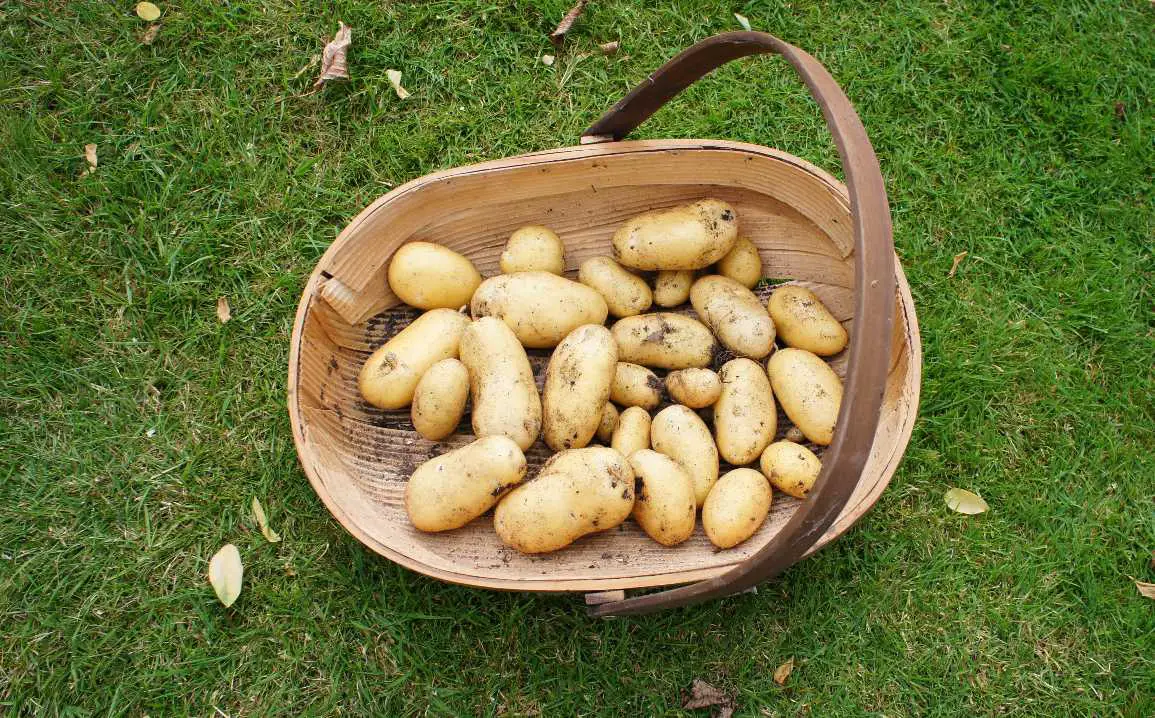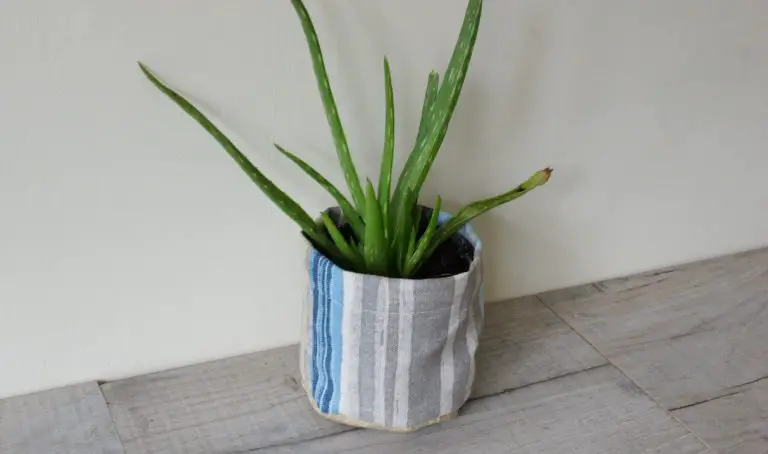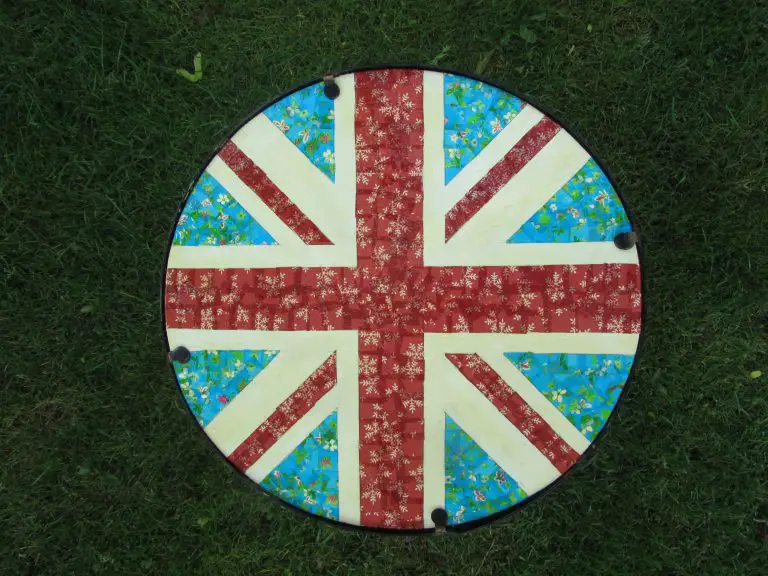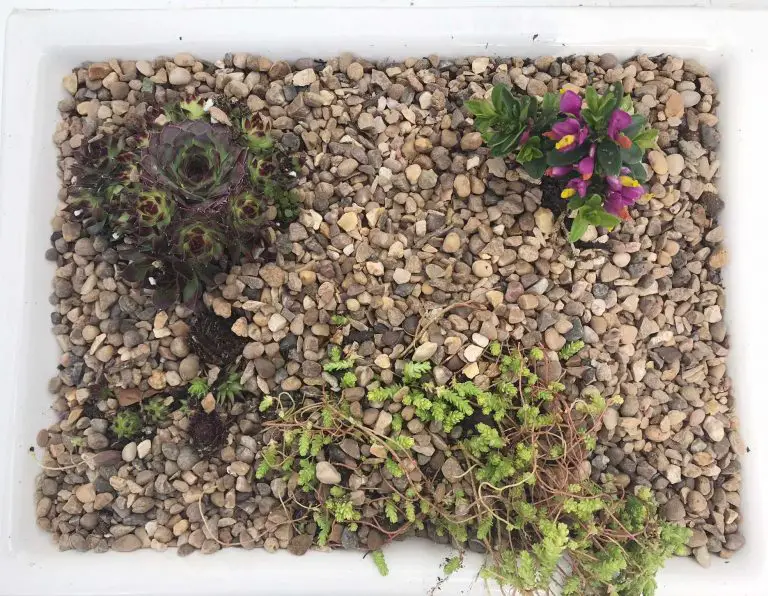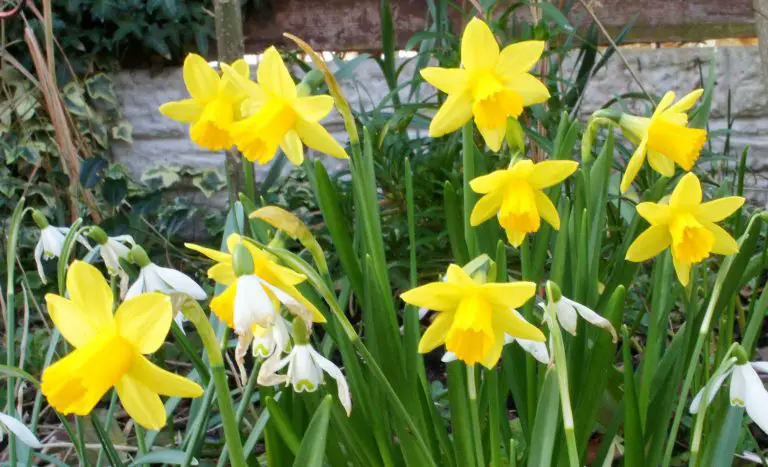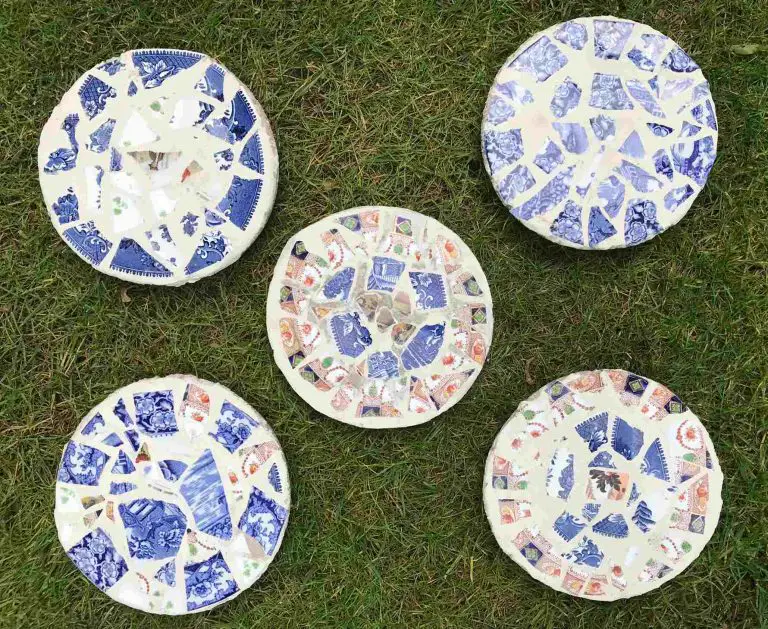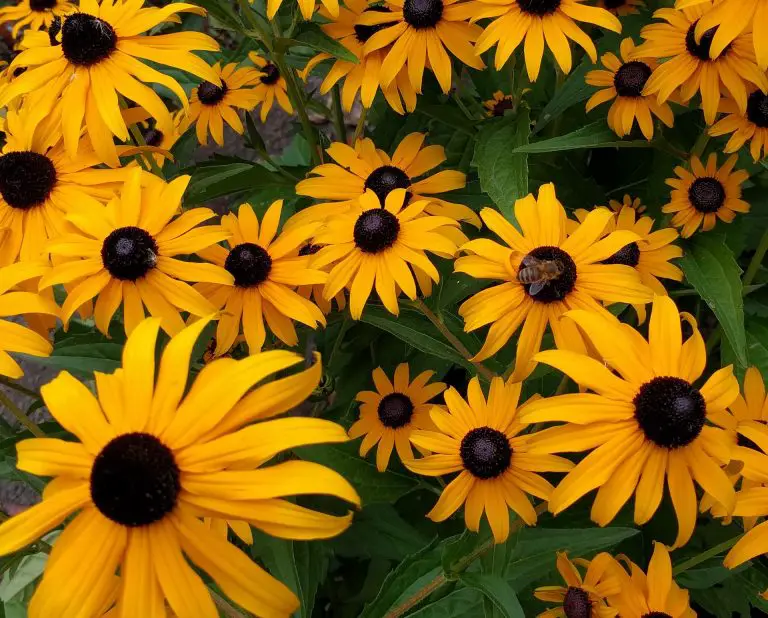How to Grow Potatoes in Containers Successfully
As an Amazon Associate I earn from qualifying purchases
Have you ever tasted the sweetness of potatoes that you have freshly dug out of the soil? If not you are missing a huge treat. They are absolutely delicious. In this article I am going to talk you through how to grow potatoes in containers so that you can enjoy this simple pleasure no matter how much (or little) space you have available.
I have grown potatoes in pots and sacks for many years and the thrill of enjoying my own fresh potatoes has never left me. My whole family look forward to harvest and the delicious potatoes.
This page contains affiliate links meaning I earn a little commission if you use those links at no cost to you. I only recommend brands I use and trust.
Contents
Why Use Containers?
What containers should you use?
Where should you place your container?
What potatoes should you plant?
What growing medium should you use?
How to grow your potatoes
What next?
Why Use Containers to Grow Potatoes?
The obvious reason to use containers is if you do not have any garden space available to you. However there are other benefits too:
- It is easier to protect your crop from pests (especially underground ones!)
- Easy to monitor watering
- Contains the plants into a manageable space
- It is possible to move the containers depending on their size
- It is easier to engage kids in the growing process
- You do not need any garden, just a patio or deck area
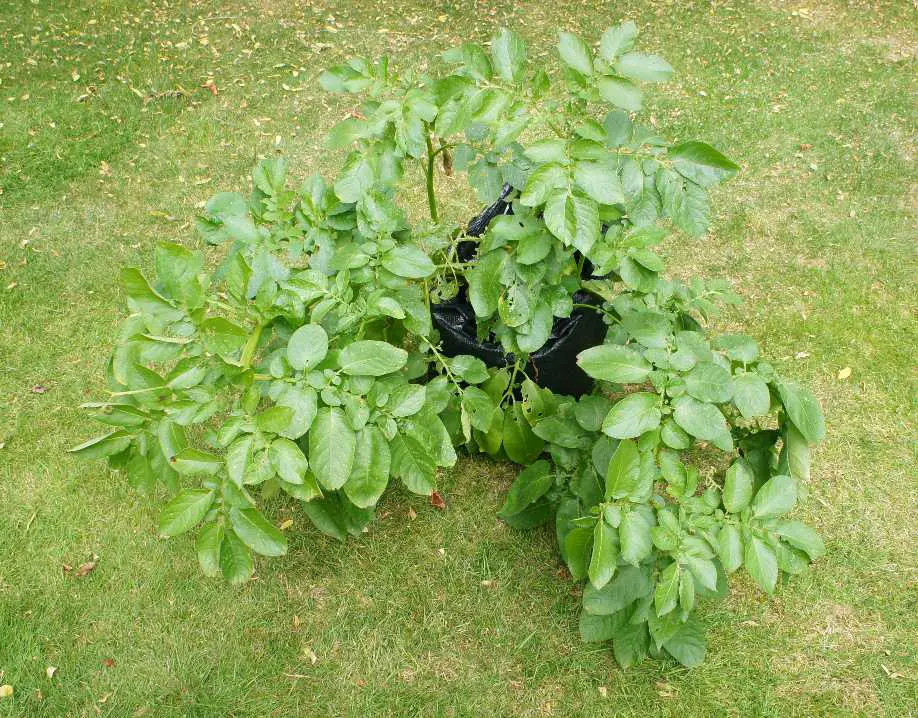
What Containers should you use?
So, now you know why you might use containers and have decided to give it a go you need to identify the best containers for you to use.
The simple answer is that you can use anything that is big enough and has drainage holes. So, how big does it need to be? There is a lot of debate about how much space each potato plant needs to grow. Basically the more space your potato plant has the larger your crop will potentially be. There seems to be an unwritten rule that says that your container should be at least 14″ across to allow space for your potato tubers to form.
Old dustbins and compost sacks make great containers. You can also buy potato sacks especially for this purpose and I have used those quite a bit. They have lasted well and I have used the same sacks for several years.
Equally, if aesthetics are important to you large pots are just as good and can look really pretty on a patio for example.



Where should you place your container?
You should place your container wherever you have space. If you only have your balcony then go for it and see how you get on. However there are some tips for choosing a good location if you have a choice.
Ideally your container needs full sun for as much of the day as possible. Six to eight hours is ideal!
Ambient temperature is also important so ideally it will be around 16C (60F) but really avoiding frost is the most important factor.
What potatoes should you plant?
I would definitely recommend that you use seed potatoes rather than ones you have bought to eat. These are potatoes that have been sold purely for growing and should be certified disease free. It also means that you can select your variety and make sure that it meets your needs.
The main factor when selecting your seed potatoes should be what you want to eat. If you particularly like a variety to eat then grow those. Here in the UK I love to grow Charlotte potatoes as they do not take long to grow and they are gorgeous simply boiled and eaten on a summer’s day.
If you are concerned about the length of your growing season then look for potatoes that are labelled ‘early’. This simply means that they have a short period from planting to harvesting.
Check seed potatoes in your area and follow the advice on the packet regarding planting and harvesting times. Local nurseries and garden centres can advise on this.


What growing medium should you use?
There are 2 main requirements for your growing medium and these are to feed your growing potato plants and to water them. There are a lot of opinions on how to achieve this but I say that you go with what you have available. If you have garden soil and nothing else then simply use that and feed your plants later if you can.
My personal mix that I am currently using is 50% multi-purpose compost, 30% garden compost and 20% leaf mould. These figures are, of course, approximate. Obviously you may not have access to all these and in the past I have just used a mix of garden soil and multi-purpose compost and my potatoes grew really well. If you want to know how to make your own leaf mould then check out how to here.
While your medium should hold some moisture to water your plants it must also drain well so that your potatoes and their roots never sit in water.

How to Grow your Potatoes
Chitting your Potatoes
What is chitting? Well, it is simply encouraging your potatoes to grow buds before you plant them and it does not take long. You ideally should let your potatoes chit for a few weeks but if time is against you simply leave them as long as you can and then plant them. After all, you do not have to chit them at all but it means that your potatoes will be earlier and with a slightly larger crop.
Chitting potatoes is something that people imagine is difficult and technical. It could not be easier! Once you get your seed potatoes simply place them into an old egg box or seed tray and place them in a light frost free place. I always use my garage windowsill. They do not require heating and in fact it should be cool and frost free. Try to place the potatoes so that they have their ‘blunt end’ up as this is likely to have the most ‘eyes’ on it. These are what develop buds.
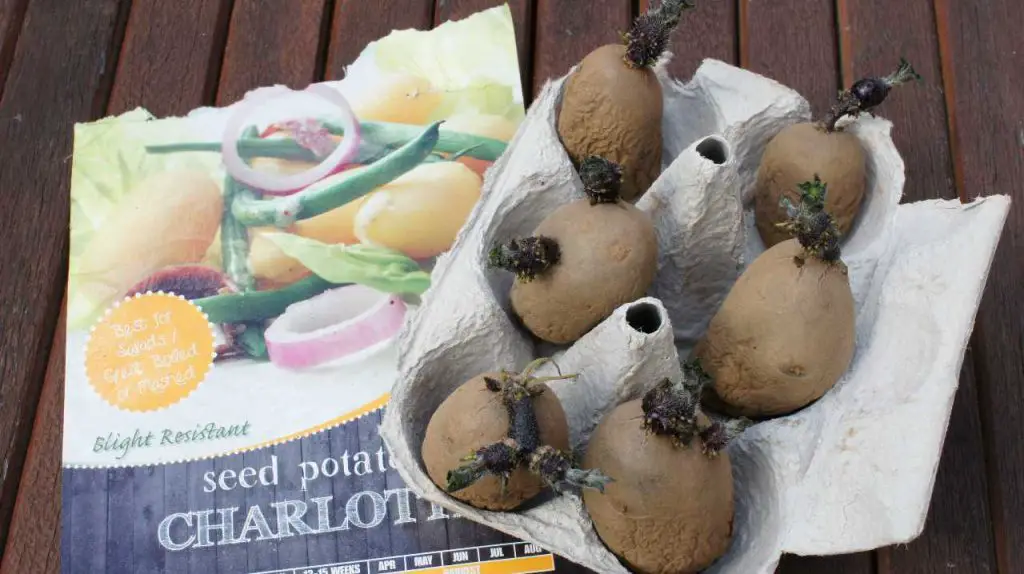
These potatoes have chitted and are ready for planting.
Planting your potatoes
Take your chosen container and add about 4 to 5″ of your growing medium in the bottom. If you are using a mix make sure you mix it before adding it to the container.
Place your seed potatoes onto the medium with the buds pointing upwards. The more seed potatoes you place in your container the smaller the harvest from each one will be. I am placing 2 in this large potato sack but I suspect that you could plant 3.
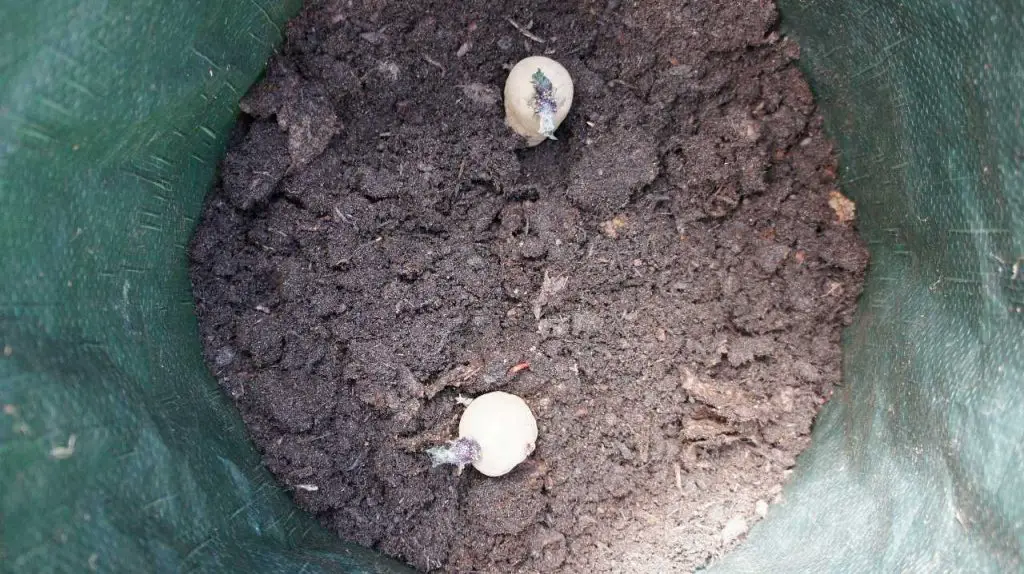
Cover the seed potatoes over with some more of your planting medium. It is important that they are fully covered so I recommend about 3 to 4 inches. Make sure your container is watered and you are underway!
Caring for your potato plants.
Keep an eye on your container and make sure that it does not dry out. How much you water will depend entirely on your local conditions. You need to keep it moist but not soggy. When you water, you can add water until it runs out of the drainage holes at the bottom. Then you are sure you have added enough.
Once plants start to appear you need to keep an eye on them and once they reach about 7 inches tall you need to ‘earth up’ or ‘hill up’ your plants. This simply means add more growing medium.
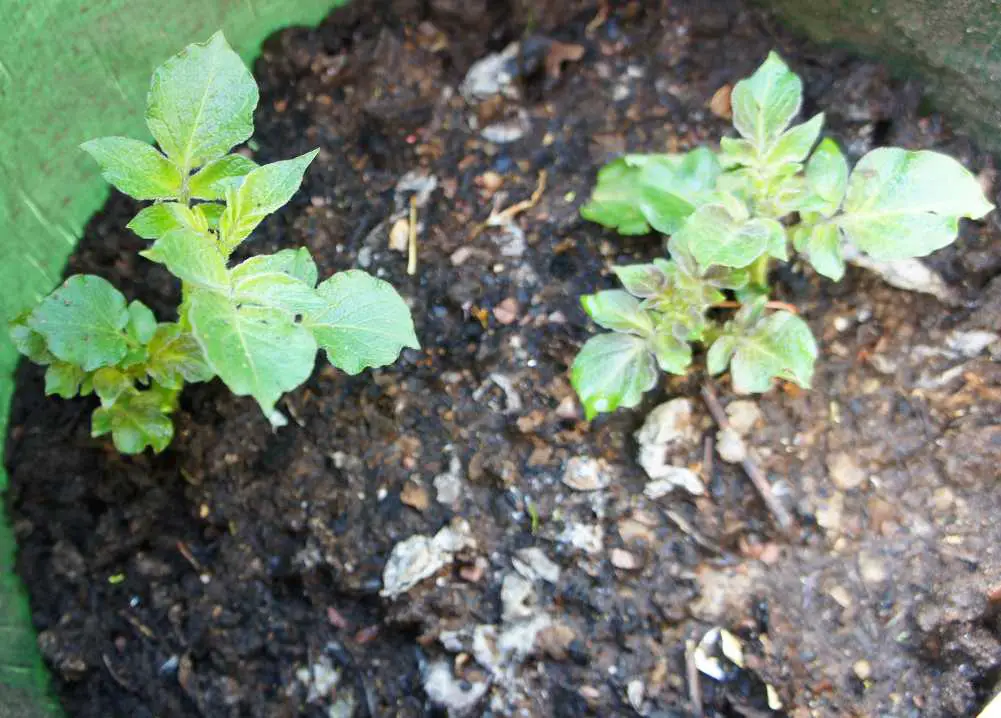
Add approximately 3 inches of your growing medium into the container. You will be covering the plants but leaving a few inches poking out of the medium. You do this so that potatoes will grow out from the stem that you are covering. It will massively increase your harvest!
To feed or not to feed that is the question! It is a personal choice but if you choose to feed your plants make sure that you use a fertilizer suitable for potatoes. You want more potatoes, not more green growth!
Monitor your container and keep repeating this until the plants reach the top of your container. Leave at least 2″ at the top of your container with no growing medium in it or it will become difficult to water.
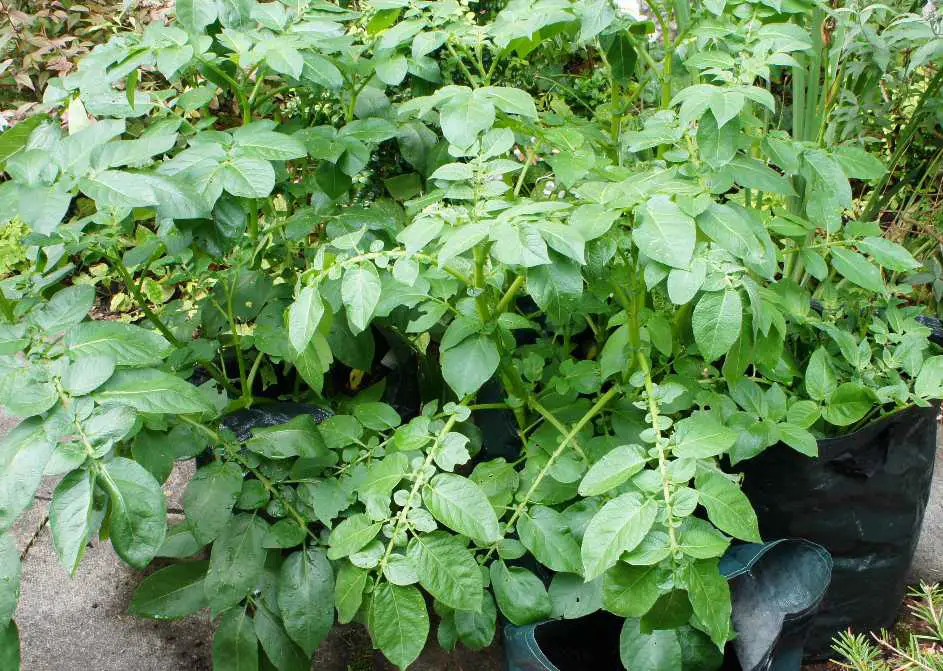
Keep caring for your potato plants. Once your plants have flowered your potatoes will be ready. NOTE: If your flowers produce fruits do NOT eat them as they are poisonous. I recommend stopping watering your plants and waiting for the stems to die back.
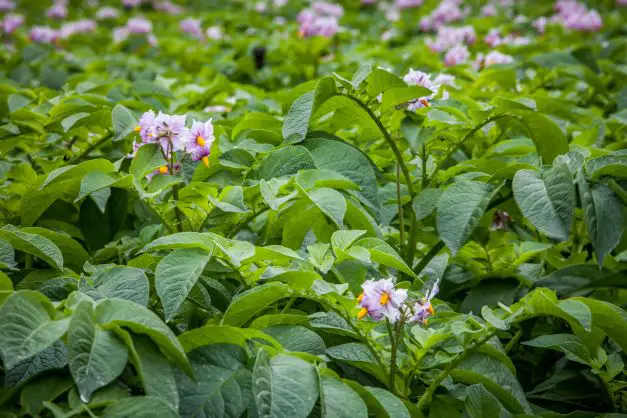
Harvesting your potatoes
The best part is finally here, though I hope that you have enjoyed the whole growing process! Once the plants have died back you can harvest your potatoes. The ideal way is to tip your container out and simply pick the potatoes from the growing medium.
However, if this is not an option then carefully dig them out using your hands and / or a small trowel. Start from the outside edge and work inwards to try and avoid damaging your potatoes.
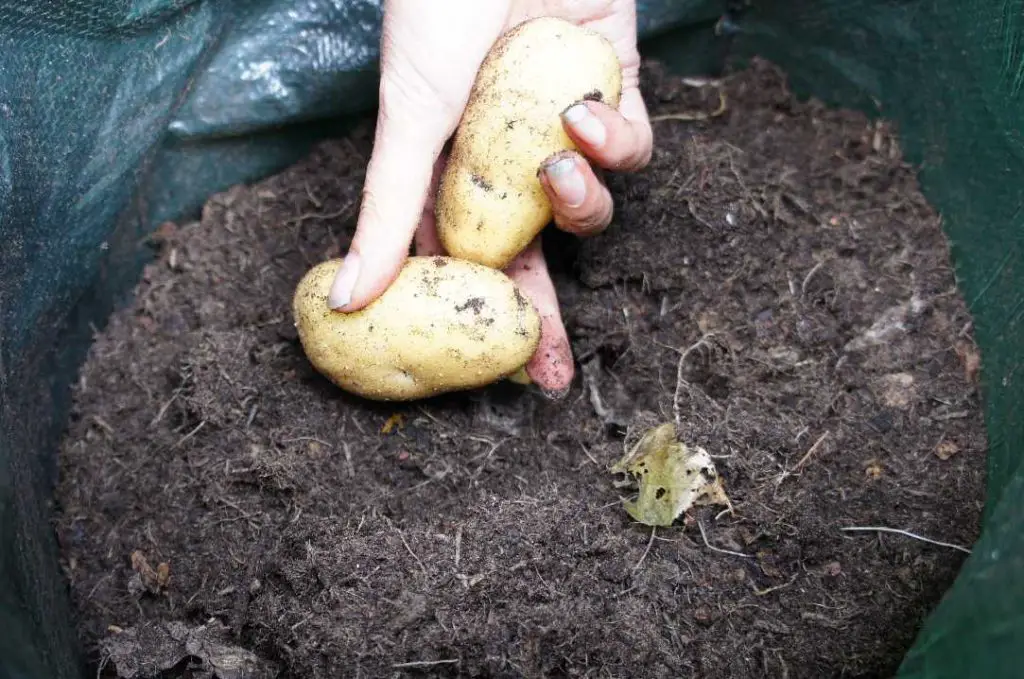
Now simply enjoy your potatoes however you like. Personally I think nothing beats boiling them with their skins on and eating them with a little butter on them – delicious!
What next?
Well, now you have a taste for it why not grow more vegetables in your containers? Carrots are a great option as it can help avoid carrot fly. But simply take a look at what’s available and have a go! That is the real beauty of gardening – it is up to you and there are no mistakes, just learning!
If you want some more ideas for your garden then why not check out:
Planting bare root perennials
How to Grow an Apothecary Garden
Get free shrubs from cuttings
Successful Seed Sowing
How to Grow a Lavender Hedge for £1
Let me know in the comments below what varieties you grow in your containers and any tips you can share with everyone else.
